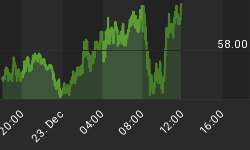Until this week, each swoon in the stock market was followed by not much more than "three-day wonders" - also there were a few of the common one and a half day rallies - often seen within a severe decline.
This rebound could be of an intermediate nature. The selling climax occurred with a major policy effort to end the panic, which will soon be deemed to be successful. However the rebound is technical, which could also be called natural. Just how natural this is, as well as the response by policymakers is fascinating, and could be described as much more than panicdotal evidence. Major financial events can be remarkably methodical.
History records a number of crashes or panics and many of them have occurred in the fall of the year. One of the big bubbles blew out in May of 1825 and the usual phase of heavy liquidation was delayed from the typical start in late September. The crash completed in January, 1826 when officials congratulated themselves in taking dramatic steps to end the panic.
As we outlined last summer, one of the blunders in policymaking has been to assume that once started, a panic will last forever - unless somebody does something. Also discussed was that once started a stock market crash typically ran for some 55 trading days when exhaustion prompted the rebound.
Using the Nasdaq Comp, the high was set at the end of October at 2861 and the plunge from high close to the low close ran for 55 trading days to Wednesday's selling climax. To the interday low of 2203 the loss was 23%. During the week there has been considerable noise about stimulus and central bank rate cuts - all coordinated, of course. It is worth noting that earlier stimulus attempts would likely be futile until the selling climax.
The record is sufficiently reliable to suggest a rule. A crash will run for around 55 trading days, with the final stages severe enough to stimulate central bankers into headline-making action. Even without policy utterances the rebound would naturally occur. Sadly, officials making the heroic gestures seem unaware of the equivalent gestures made by their counterparts during a number of previous examples.
One of the outstanding examples of the initial 55-day disaster abruptly ended the 1Q2000 tech blow off. That crash ran 52 trading days to the low and the rebound started on day 55. The 1987 crash ran 51 days to the low and after a quick test the rebound started on day 55. The notorious 1929 crash ran for 55 trading days. Even if this evidence was known to interventionist economists, it is doubtful that it would change the ardent belief that the 1929 crash was due to a policy blunder when the discount rate was increased from 5% to 6% in August. After all, central banking is a perfect system that only fails when somebody at the top makes an error. Regrettably, that is an ad hominem argument so often employed by socialists when plans go wrong.
In most cases the 55-day crash was the initial distress that ended a financial mania. The 1987 panic was within the context of a bull market.
Considering the enormity of the credit problems, this crash can be described as the initial panic in a long post-bubble contraction. Policymakers are adding to their long record of futile gestures.
















